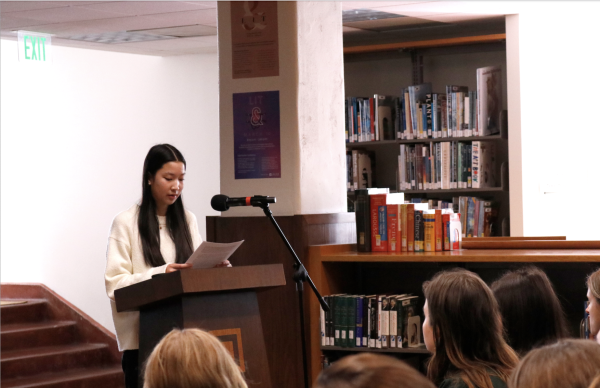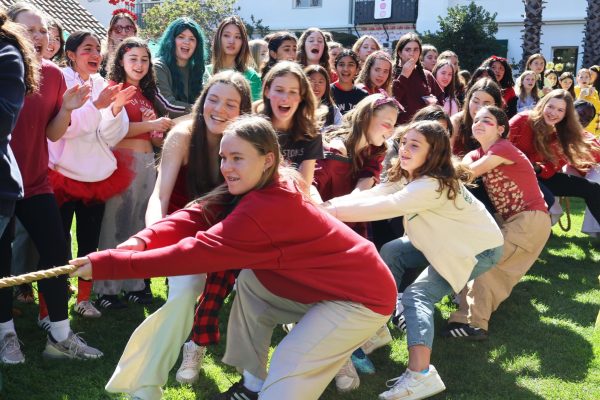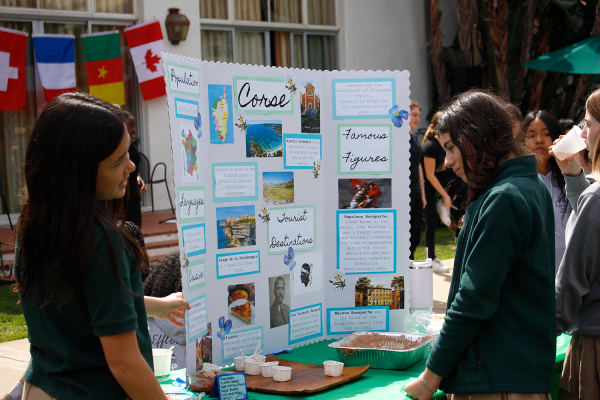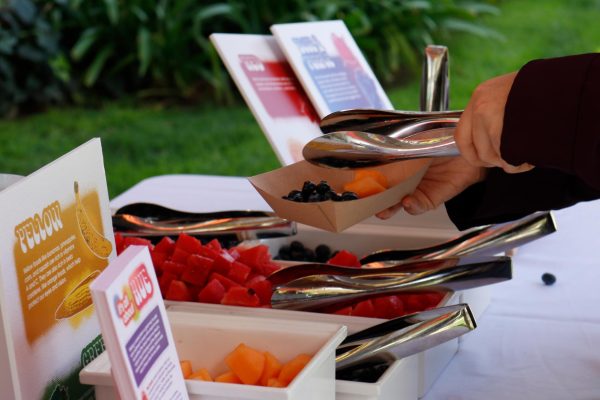Charlotte Kamdar presents on Nowruz, shares holiday’s significance
Photo credit: Lizette Gonzalez
In honor of Nowruz, seventh grader Charlotte Kamdar installed a Haft-Sin that is currently displayed in Archer’s Zimmer Family Gallery. She led Archer’s celebration of Nowruz by presenting on the holiday to the community March 15.
March 17, 2022
In honor of Persian New Year, also known as Nowruz, seventh grader Charlotte Kamdar installed a Haft-Sin in the Zimmer Family Gallery and presented about the holiday to the community March 15. The Haft-Sin is a table where multiple objects are placed and is an integral part of the tradition as each object symbolizes a value in Persian culture. Archer’s Haft-Sin includes apples, a mirror, candles, flowers, grass and more. This year, Nowruz begins March 20 and ends April 2 during the spring equinox.
In Persian culture, Nowruz marks the first day of spring and welcomes in a new year in conjunction with the Iranian calendar. Nowruz is a secular holiday and over 300 million people around the world celebrate it.
Kamdar spearheaded Archer’s celebration of Nowruz and said her family takes part in all of the traditions, which is why she wanted to share her culture with other Archer students who might not know much about Nowruz.
“I’ve always celebrated Persian New Year with my family because I’m very lucky to have almost all of my family in Los Angeles,” Kamdar said. “It’s my favorite holiday because we get to be with our family a lot, not that we need a reason to be together, but it’s 14 days of fun, family and traditions that really make me happy.”
As Kamdar is the only student leading Archer’s Nowruz celebration, she said she is very proud of her “one-girl show” and hopes other students from outside cultures volunteer to share their traditions.
In my family, when we jump over fire, we set up four aluminum pans and jump. We are basically burning our red, our pain, and taking the yellow part of the fire, the happiness. We are burning bad and starting over.
— Charlotte Kamdar ('27)
“I wasn’t sure if I was going to be able to pull it off as a one girl show. I’m really proud of the outcome though and I hope students open up to learning about other cultures,” Kamdar said. “I hope people do research or other students who have their own traditions open up about creating their own presentations and setting up galleries and more.”
Kamdar’s presentation touched on fun facts about Persian New Year and events before and after the holiday. She also incorporated a Kahoot for the student body. She also showed a video that details the significance of each object on the Haft-Sin.
“I really wanted [the presentation to] focus mainly on what is on the Haft-Sin, the Persian New Year table,” Kamdar said. “It’s the most significant part because everything on the table has a reason into why it’s on the table. The seven main things start with ‘S’ in Farsi, such as an apple, which is on the table, which starts with an ‘S’ in Farsi, and it represents good health. There’s a mirror on the table for self-reflection, and each food or object has some significance.”
Junior Chloe Terani celebrates Nowruz with her family, as well, and said her favorite part about the holiday is the significance of every tradition.
“Sometimes, we do the tradition of jumping over fire which is always fun and a good way to get together with the community,” Terani said. “The significance of this is that we are essentially jumping over our demons to overcome them. Also, getting goldfish every year is a strong memory I have from my childhood. We’ll go out and get one or multiple for the table. We set up a little bowl for it and it’s like a new addition to the family … and it’s always such a fun time.”
Terani said that she appreciated seeing the Haft-Sin displayed in the Zimmer Gallery as Nowruz isn’t typically talked about or celebrated in schools.
“[Kamdar] did a really good job making the Haft-Sin. I felt very recognized when I saw it because schools don’t always do that,” Terani said. “It was a nice surprise to come to school and see something similar to what I have at home around this time.”





![Freshman Milan Earl and sophomore Lucy Kaplan sit with their grandparents at Archer’s annual Grandparents and Special Friends Day Friday, March 15. The event took place over three 75-minute sessions. “[I hope my grandparents] gain an understanding about what I do, Kaplan said, because I know they ask a lot of questions and can sort of see what I do in school and what the experience is like to be here.](https://archeroracle.org/wp-content/uploads/2024/03/grandparents-day-option-2-1200x800.jpg)














































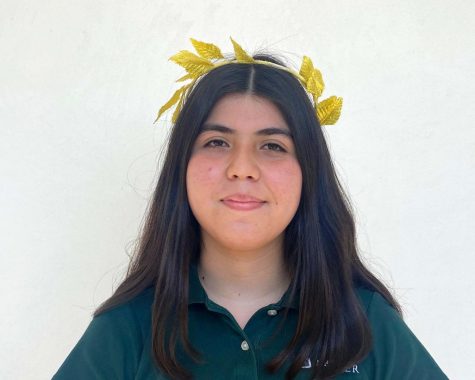




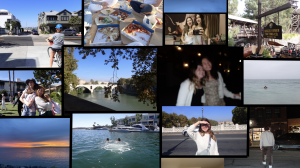



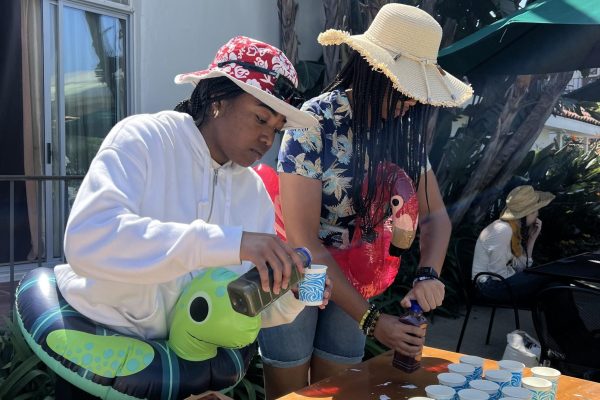
![Freshman Milan Earl and sophomore Lucy Kaplan sit with their grandparents at Archer’s annual Grandparents and Special Friends Day Friday, March 15. The event took place over three 75-minute sessions. “[I hope my grandparents] gain an understanding about what I do, Kaplan said, because I know they ask a lot of questions and can sort of see what I do in school and what the experience is like to be here.](https://archeroracle.org/wp-content/uploads/2024/03/grandparents-day-option-2-600x400.jpg)
